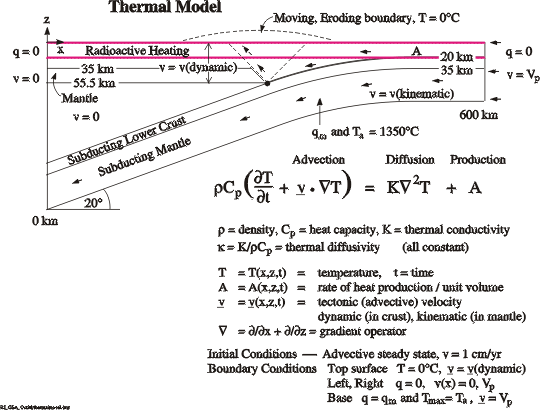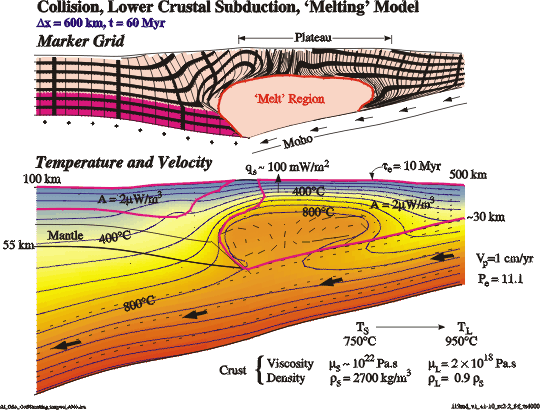
Figure 1a. Initial geometry of coupled thermal mechanical model. Pro-mantle and lower crust subducts at S and Vp=1cm/yr. Radioactive upper crust, 20 km thick A=2µ W/m3, is tectonically accreted and thickens. Model contains an upper region, where the fully-coupled dynamics and thermal evolution is calculated, and a lower kinematic region, where velocity is specified and the thermal consequences are calculated. Basal heat flux, qm=30mW/m2. Surface is eroded with t e=10Myr time constant. The crust/mantle have feldspar/olivine 'ductile' rheologies respectively and in the 'brittle' part of the Coulomb crust the internal angle of friction is 15° . Thickened crust is isostatically compensated.

Figure 1b. Upper panel shows deformed crust (marker grid is passively advected). Melt region has T>750° C but properties in the melt region vary with T as indicated at bottom of figure. Note plateau above weak melt region. Lower panel shows that hottest crust corresponds to the thick 'tarm' region (magenta outline). Velocities show lower crust convection. Note strong contrast in thermal state of the pro-lithosphere (Pe>1, DIII>>1) and retro-lithosphere (Pe>1, DIII<1). Metamorphic conditions vary correspondingly and rock particles travelling through the system will experience P-T-t paths that reflect the space-time changes in model properties.
Back to Lithoprobe Supporting Geoscience Proposal, November 1998